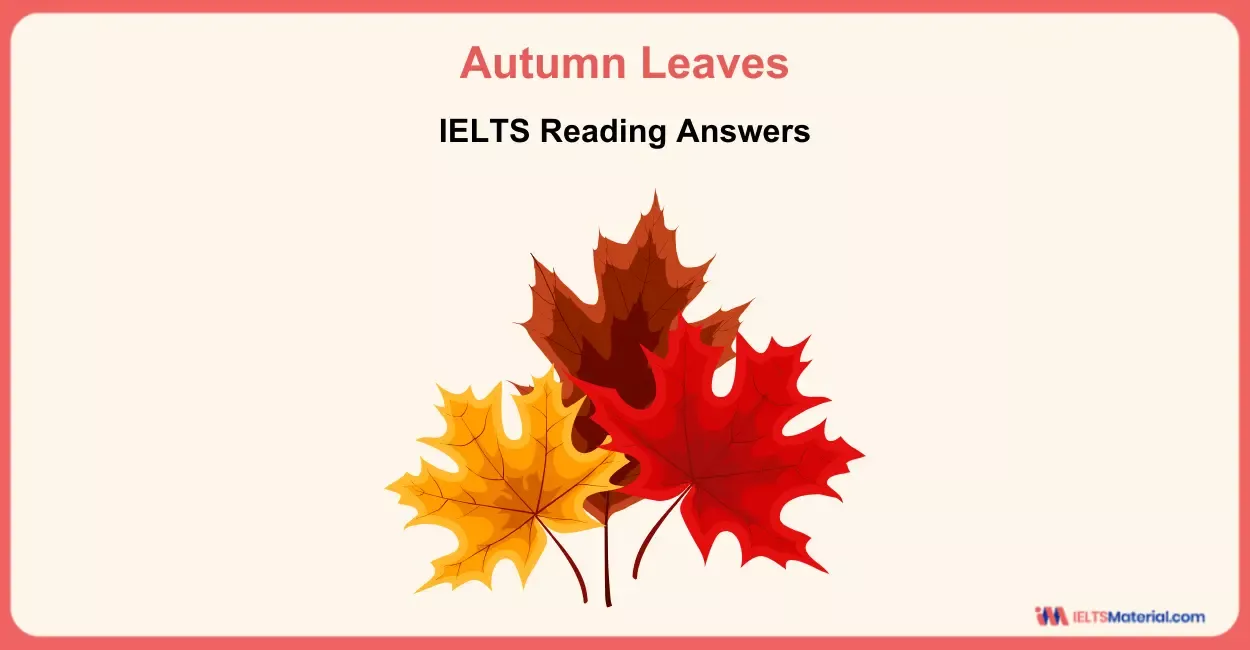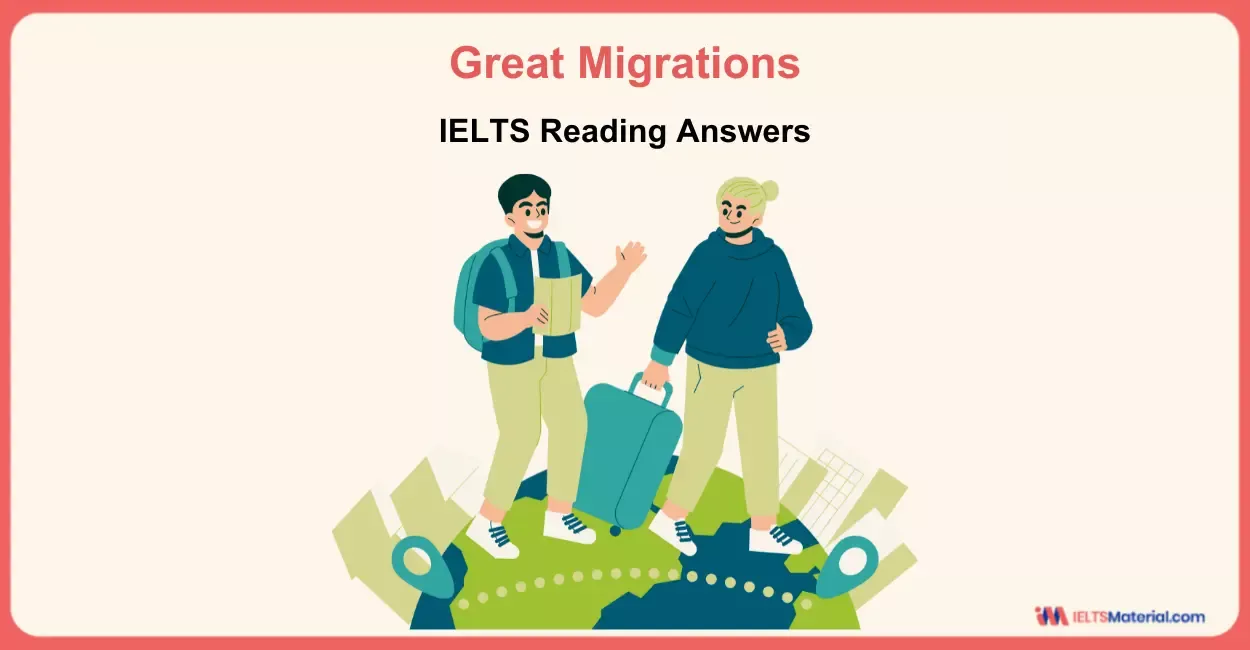The Changing Role Of Airports - IELTS Reading Answers
9 min read
Updated On
-
Copy link
Get ready for the IELTS Academic Reading section with topics like ‘The Changing Role Of Airports Reading Answers’, and significantly improve your IELTS reading band score. This blog provides tips, answers, and explanations for those aiming for a Band 9.
Table of Contents

Limited-Time Offer : Access a FREE 10-Day IELTS Study Plan!
The Changing Role Of Airports is a real reading test passage that appeared in the IELTS. With diligent practice, the IELTS Reading module can be the top-scoring category for IELTS aspirants. A strong understanding of IELTS Reading question types is essential for a good score. By solving and reviewing them from past IELTS papers, you can ensure that your reading skills are up to the mark.
Take the practice test The Changing Role Of Airports below and try more IELTS reading practice tests. We have provided explanations, locations for the answers, and tips to help you handle the three different types of reading questions here.
Not sure how to answer IELTS Reading Matching Information questions? Check out the video below for the latest tips and strategies!
Questions & Passage for The Changing Role of Airports IELTS Reading Answers
The passage, The Changing Role Of Airports Reading Answers, consists of 13 questions, which showcase three different IELTS Reading question types. They are:
- IELTS Reading Matching Information (Q. 14-18)
- IELTS Reading Sentence Completion (Q. 19-22)
- IELTS Reading Summary Completion (Q. 23-26)
Now go through the passage for ‘The Changing Role Of Airports’ Reading Answers PDF given below, and be prepared to solve similar IELTS Reading topics for General and Academic for the reading section.
The Changing Role Of Airports
You should spend about 20 minutes on Questions 14-26, which are based on the Reading Passage below.
The Changing Role Of Airports PDF
Book a FREE IELTS demo with our experts to learn tricks and techniques to ace the IELTS Reading!
The Changing Role Of Airports IELTS Reading Answers with Location and Explanation
Now, you will find the answers along with the location of the answers in the passage and the keywords that help you find out the answers. Check out 'The Changing Role of Airports' answers and assess your improvement for a high IELTS band score.
| Question number | Answer | Explanation |
|---|---|---|
| 14 | E | Paragraph E cites an online airport survey conducted in 2011 and some of the areas ‘investigated’ (leads to evidence) included the ‘provision and use of meeting facilities at airports’ and the perceived role and importance of these facilities in generating income and raising passenger numbers. In total, there were responses from ‘staff at 154 airports’ (a significant number of airports) and ‘68% of these answered “yes” (evidence) to the question: Does your airport own and have meeting facilities available for hire? The existence of meeting facilities, therefore, seems high at airports. Hence, the answer is E. |
| 15 | B | Paragraph B mentions that some of the more obvious solutions to ‘growing commercial revenues’ (airport trade), such as extending the merchandising space or expanding the variety of shopping opportunities, have already been ‘tried to their limit at’ (no further developments are possible) many airports.
Hence, the answer is B. |
| 16 | G | Paragraph G relates to a survey that asked respondents with meeting facilities to estimate how much ‘revenue their airport earned from its meeting facilities’ during the last financial year. The average revenue per airport ‘was just $12,959’. Meeting facilities are effectively a ‘non-aeronautical source of airport revenue’ (low level income). Only 1% of respondents generated more than 20% non-aeronautical revenue from their meetings facilities; ‘none generated more than 40%’. Hence, the answer is G. |
| 17 | A | Paragraph A states that in recent times ‘developing commercial revenues has become more challenging for airports’ due to a combination of factors, such as increased competition from Internet shopping, restrictions on certain sales, such as tobacco, and new security procedures that have had an impact on the dwell time of passengers. Moreover, the ‘global economic downturn has caused a reduction in passenger numbers’ while those that are travelling generally have less money to spend. This has meant that the ‘share subsequently declined slightly’ (the impact). Meanwhile, the pressures to ‘control the level of aeronautical revenues’ (budget airlines) are as strong as ever ‘due to the poor financial health of many airlines’ and the ‘rapid rise of the low-cost carrier sector’. Hence, the answer is A. |
| 18 | C | Paragraph C mentions that airports have been developing and expanding the range of services that they provide specifically ‘for the business traveller’ in ‘the terminal’ (example of airport premises). This includes ‘offering business centres’ that supply support services, ‘meeting or conference rooms’ and ‘other space for special events’. Hence, the answer is C. |
| 19 | Security procedure | Paragraph A points out that in recent times developing commercial revenues has become more challenging for airports due to a combination of factors, such as increased competition from Internet shopping, restrictions on certain sales, such as tobacco, and ‘new’ (updated) ‘security procedures’ that ‘have had an impact’ (has been affected) on ‘the dwell time of passengers’ (length of time passengers spend shopping at airports). Hence, the answer is ‘security procedure’. |
| 20 | Final destination | Paragraph B states that any terminals are now much more than just shopping malls and offer ‘an array of entertainment, leisure, and beauty and wellness facilities’ (wide range of recreational facilities). At this stage of facilities provision, the airport also ‘has the possibility of taking on the role’ (can become) ‘of the final destination’ ‘rather than merely a facilitator of access’ (rather than a means of travel). Hence, the answer is ‘final destination’. |
| 21 | airlines | Paragraph D explains that if an airport location can be ‘promoted as a business venue’ (market their business services), this may ‘increase the overall appeal’ of the airport and help it become more competitive in both ‘attracting and retaining’ (develop a sense of loyalty) ‘airlines and their passengers’. Hence, the answer is ‘airlines’. |
| 22 | Competitive advantage | Paragraph D points out that the ‘presence of meeting facilities’ (supply meeting facilities) could become ‘one of the determining factors’ taken into consideration when ‘business people are choosing airlines’ and where they change their planes. This ‘enhanced attractiveness’ itself may help to ‘improve the airport operator’s financial ‘position and future prospects’’, but clearly, this will be ‘dependent on’ the ‘competitive advantage’ that the airport is able to achieve in ‘comparison with other venues’ (over other venues). Hence, the answer is ‘competitive advantage’. |
| 23 | Economic downturn/climate | Paragraph A refers to the facts that the ‘global economic downturn’ has caused a reduction in passenger numbers while those that are travelling generally have less money to spend. It is further added that in 2011, an online airport survey was conducted and some of the areas investigated included the provision and use of meeting facilities at airports and the perceived role and importance of these facilities in generating income and raising passenger numbers. The survey also asked to what extent respondents agreed or disagreed with a number of statements about the meeting facilities at their airport. ‘49% of respondents’ agreed that they would ‘invest more in the immediate future’ (wish to further support business meeting facilities). These are ‘fairly high proportions’ (a significant percentage) considering the ‘recent economic climate’. Hence, the answer is ‘economic downturn/climate’. |
| 24 | Five years | Paragraph E declares that the existence of meeting facilities, therefore, seems high at airports. In addition, ‘28% of respondents’ (just under 30%) that did not have meeting facilities stated that they were ‘likely to invest’ in them during the ‘next five years’. Hence, the answer is ‘five years’. |
| 25 | Local (people) | Paragraph F revealed that the survey also asked airports with meeting facilities to estimate what proportion of users are from the local area. i.e. within a 90-minute drive from the airport, or from abroad. Their findings show that ‘meeting facilities’ provided by the majority of respondents tend to serve local versus non-local or foreign needs. 63% of respondents estimated that over ‘60% of users’ (main users) are ‘from the local area’ (local people). Hence, the answer is ‘local (people)’. |
| 26 | flights | Paragraph F discussed the fact that it is therefore not surprising that the facilities are of limited importance when it comes to increasing use of fights at the airports: ‘16% of respondents’ estimated that ‘none of the users of their meeting facilities uses’ (their users did not take) fights’ when traveling to or from them. Hence, the answer is ‘flights’. |
Book FREE IELTS online classes with our IELTS experts to learn more tips and techniques of IELTS Reading!
Tips for Answering the Question Types in the The Changing Role Of Airports IELTS Reading Passage
Given below are some IELTS exam preparation tips for band score of 8+ by helping you answer the types of questions in the ‘The Changing Role Of Airports’ Reading passage.
Matching Information to Paragraphs
- Read all five statements carefully: Underline the keywords and concepts (e.g., ‘significant number’, ‘no further developments’, ‘impact of budget airlines’) as each question is focused on specific information, not the main idea.
- Scan paragraph headings quickly: Skim each paragraph (A–H) to get the gist if they are available. In case they are not given, scan the first two lines and any statistics or examples.
- Use Keyword Search: Look for exact words or synonyms. For instance, ‘Budget airlines’ might appear as ‘low-cost carriers’ and ‘No further developments’ might be phrased as ‘fully exploited’ or ‘saturated’.
- Find the paragraph that mentions the idea clearly: Match the paragraph that clearly explains or discusses the full idea in the question, and not just mentions a word.
- Check for reused letters: A paragraph (e.g., Paragraph C) might contain answers to more than one question, so read thoroughly once you find a match.
Sentence Completion (NO MORE THAN TWO WORDS)
- Read the sentence carefully: Predict the kind of word needed (noun/adjective). E.g., ‘affected by updated _____’ likely needs a noun.
- Use the keywords to scan the text: Look for associated words. For Q. 19, scan for ‘shopping’ and ‘affected’ or ‘updated’ as they will lead you to the right part.
- Take exact words from the passage: Your answer must be lifted directly from the passage, without paraphrasing. In case words are given specifically to fill the gaps, use them.
- Match grammar and meaning: Make sure your answer fits grammatically. If the sentence reads smoothly with your answer inserted, it’s likely correct.
- Respect the Word Limit: Stick to two words maximum. If you use more than that, you will lose a mark.
Summary Completion (NO MORE THAN TWO WORDS)
- Read the entire summary first: Understand what it is about (e.g., survey results on airport meeting facilities). This gives you the logical flow of ideas.
- Predict the type of missing word: Just like sentence completion questions, here also you have to predict the type of word that will fit in the gap. For example, Q.23 asks for a reason for financial constraints (likely a noun), while Q.26 likely requires something measurable like ‘spending’.
- Scan for the right part of the passage: Look for headings or topic sentences about surveys or survey findings. They often appear near the end of the passage.
- Lift only what is needed: Use the exact word(s) as written in the passage. There is no need for rephrasing.
- Cross-check with the sentence structure: Ensure the word fits meaningfully and grammatically.
Finally, reading samples from IELTS recent actual tests, such as The Changing Role Of Airports IELTS Reading Answers, is crucial. They will assist you in improving your reading speed, identifying your areas of weakness, and getting more used to the many kinds of reading questions. Thus, keep taking these tests and get the outcomes you want.
Check More IELTS Reading Answers
Practice IELTS Reading based on question types

Start Preparing for IELTS: Get Your 10-Day Study Plan Today!
Explore other Reading Practice Tests

Kasturika Samanta

Kasturika Samanta

Nehasri Ravishenbagam
Recent Articles

Nehasri Ravishenbagam

Haniya Yashfeen

Haniya Yashfeen

Haniya Yashfeen





Post your Comments